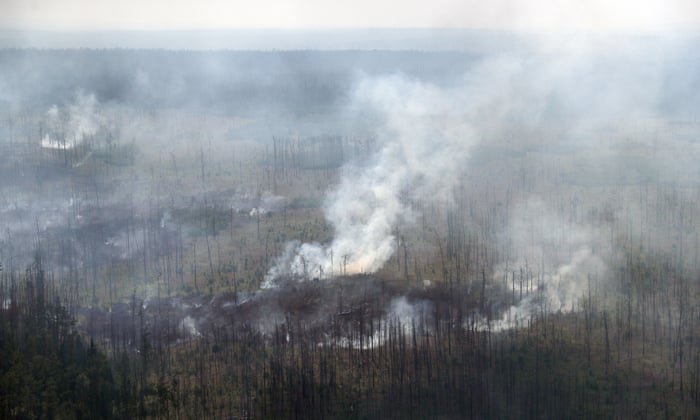hen Marco Aurelio Zapata first built his farm named La Flor Del Amazonas (The Amazon Flower) deep in the Colombian rainforest nearly half a century ago, the only sound from his surrounding 288 hectares was that of the wild: howler and capuchin monkeys, macaws, and immeasurable birds, insects and amphibians striking up a cacophony of noise.
The modern era has violently interrupted this natural chorus. During the country’s long civil war which ended with a ceasefire in 2017 low flying crop-dusting planes would roar overhead dousing the forest canopy with herbicide in a bid to stem the guerilla’s cocaine production, much of it centred in Guaviare province where Zapata lives and tends to his smallholding.
Now it is the distant buzz of chainsaws, growing nearer all the time. Machete in hand hacking a path through the rainforest, the 62-year-old Zapata leads us to a clearing the size of several football pitches recently levelled by a neighbour to sell as cattle pasture.
“I feel sad and also angry to see it,” Zapata says. “This is a beautiful place and we want to protect the land but here anybody can do what they want.”

Concerned landowner and former coca grower Marco Aurelio Zapata is under constant pressure to sell his land to commercial cattle ranchers CREDIT: DAVID ROSE /THE TELEGRAPH
This swathe of jungle on the edge of Colombia’s Chiribiquete national park, declared a world heritage site in 2018 and championed by the Prince of Wales as a vital lung of the earth, is part of a rapidly unfolding environmental crisis stretching right across the Amazon basin.
Continue reading at: Amazon emergency: two-thirds of species are under threat from deforestation – dispatch
The modern era has violently interrupted this natural chorus. During the country’s long civil war which ended with a ceasefire in 2017 low flying crop-dusting planes would roar overhead dousing the forest canopy with herbicide in a bid to stem the guerilla’s cocaine production, much of it centred in Guaviare province where Zapata lives and tends to his smallholding.
Now it is the distant buzz of chainsaws, growing nearer all the time. Machete in hand hacking a path through the rainforest, the 62-year-old Zapata leads us to a clearing the size of several football pitches recently levelled by a neighbour to sell as cattle pasture.
“I feel sad and also angry to see it,” Zapata says. “This is a beautiful place and we want to protect the land but here anybody can do what they want.”

Concerned landowner and former coca grower Marco Aurelio Zapata is under constant pressure to sell his land to commercial cattle ranchers CREDIT: DAVID ROSE /THE TELEGRAPH
This swathe of jungle on the edge of Colombia’s Chiribiquete national park, declared a world heritage site in 2018 and championed by the Prince of Wales as a vital lung of the earth, is part of a rapidly unfolding environmental crisis stretching right across the Amazon basin.
Continue reading at: Amazon emergency: two-thirds of species are under threat from deforestation – dispatch





